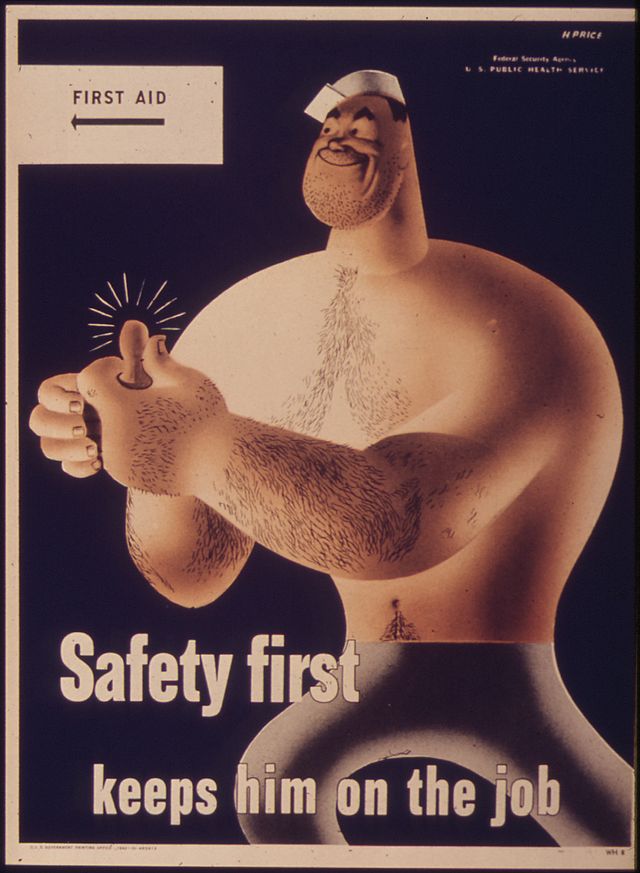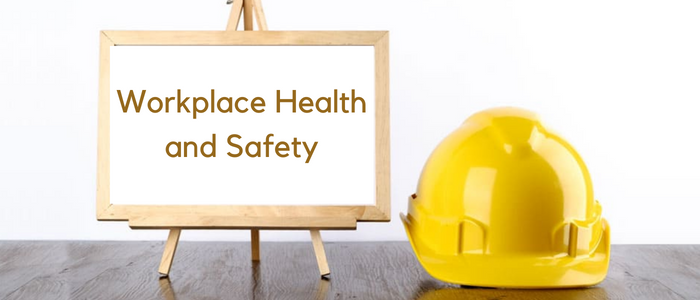Introduction to Occupational Health and Safety
Occupational health and safety are not for a specific industry only; It is relevant to every branch of industry, business and commerce including traditional industries, information technology companies, the National Health Service, care homes, schools, universities, leisure facilities and offices.
This article provides you with solid foundations on the scope and nature of occupational health and safety.

Workplace health and safety has an impact on all aspects and levels of work. Health and safety may be managed by a single competent manager in a low-hazard organization. In a high-risk manufacturing facility, a variety of specialists may be needed to help the professional health and safety practitioner ensure that the company has adequate health and safety standards, including engineers (electrical, mechanical, and civil), lawyers, doctors, nurses, trainers, and supervisors.
The construction industry is one of the largest industries in the world. In UK only, it accounts for 8% of its gross domestic product. It has a yearly revenue of more than £250 billion and employs 10% of the working population. Although the construction industry is reputable for the high-quality standard of work, it is still one the most dangerous practices in the world. For example, in UK, in comparison to the industrial average of 0.8, the fatal injury rate (per 100,000 workers) in 2004–2005 was 3.4. The number of fatalities in the sector increased by 28% in 2006–07, making up 32% of all notifiable fatal injuries. The Health and Safety Executive (HSE) announced in August 2010 that the industry’s output fell by 11.5 percent in 2009 (compared to a 5 percent decline for the economy as a whole), with a slow resumption of recovery occurring over the next several years. Even yet, the construction sector still accounts for 8.3% of the UK economy and employs more than 2.5 million people across more than 300,000 businesses.
The construction industry set a goal to drastically lower these injuries over a five-year period in an attempt to minimize the risk of fatal and serious injuries to its workers, and some progress has been achieved in that direction. A key player in the effort to raise health and safety standards is the construction client who commissions the job. At the tendering stage, the client should demand proof of a contractor’s performance and track record in terms of health and safety, and they should also make sure that on-site health and safety requirements are being followed. Additionally, he or she should insist that everyone employed at the location has the appropriate training for their position.
The attainment of high standards faces many obstacles that need to be overcome. Common examples of such challenges include the pressure of production or performance objectives, financial limitations, and the complexity of the organization. In challenging economic times, businesses must cut expenses, which frequently has an influence on the management of health and safety, including the upkeep of complex machinery and the instruction of personnel in safe systems of work. There are, nevertheless, some strong financial incentives for organizations to pursue high health and safety standards. These incentives are moral, legal, and financial.
The word “corporate responsibility,” which is frequently used in the workplace of the twenty-first century, refers to a broad range of issues. The impact of an organization’s operations on the environment, human rights, and Third World poverty are all included. Workplace health and safety is a crucial business responsibility issue.
There are several definitions of corporate responsibility. The ways in which businesses manage their basic operations to add social, environmental, and economic value in order to have a good, long-lasting influence on society as well as the business itself are covered extensively under this term of corporate responsibility. This concept is covered by phrases like “corporate social responsibility,” “socially responsible business,” and “corporate citizenship.”
Mission of Health and Safety Executive (HSE)
The goal of the Health and Safety Executive (HSE) is to make sure that worker health and safety concerns are effectively managed. Regarding corporate responsibility, efforts are being made to encourage corporations to:
- increase the effectiveness of health and safety management systems to decrease accidents and illness;
- show the board how important health and safety concerns
- reporting publicly on these issues inside their organization, including how they performed in relation to targets.
The HSE believes that effective management of health and safety:
- is vital to employee well-being;has a role to play in enhancing the reputationof businesses and helping them achieve highperformance teams;
- is financially beneficial to business.
Basic Definitions
This section provides you with some basic occupational health and safety definitions.
Health – The protection of the bodies and minds of people from illness resulting from the materials, processes or procedures used in the workplace.
Safety – The protection of people from physical injury. The borderline between health and safety is ill-defined and the two words are normally used together to indicate concern for the physical and mental well-being of the individual at the place of work.
Welfare – The provision of facilities to sustain the health and well-being of individuals at the workplace. Welfare facilities include washing and sanitation arrangements, the provision of drinking water, heating, lighting, accommodation for clothing, seating (when required by the work activity or for rest), eating and rest rooms. First-aid arrangements are also considered as welfare facilities.
Occupational or work-related ill-health – This relates to illnesses or physical and mental issues that are brought on by or brought on by work-related activities. Such circumstances may be brought about by the person’s specific job activity or by other people’s actions at work. Asthma attacks are an example of a short-term sickness when there is little to no time between exposure and onset (e.g. deafness or cancer)
Environmental protection – These are the arrangements made to address workplace activities that may have an impact on the environment (as represented by the flora, fauna, water, air, and soil), as well as, conceivably, the health and safety of employees and others. The dumping of garbage and effluents and air pollution are two examples of such actions.
Accident – The Health and Safety Executive (HSE) defines this as “any unplanned event that results in injury or illness of people, damage or loss to property, plant, materials or the environment, or a loss of a business opportunity.” Other authorities have a more restrictive definition of an accident, omitting incidents that do not result in harm or illness.
Near miss – Any event that may have led to an accident falls under this category. Research has revealed that, on average, one small accident will occur for every 10 “near miss” incidences at a certain employment location. This makes understanding near misses crucial.
Dangerous occurrence – This “near miss” had the potential to cause severe harm or perhaps death. The Reporting of Injuries, Diseases and Dangerous Events Regulations (often abbreviated as RIDDOR) defines dangerous occurrences, which must always be reported to the appropriate enforcement authorities.
Examples include the breakdown of any passenger-carrying equipment as well as the collapse of a scaffold or crane.
Hazard and risk –
A hazard is: something dangerous, something that may go wrong (this can include articles, substances, plant or machines, methods of working, the working environment and other aspects of work organization). There are many different types of hazards, such as those caused by chemicals, electricity, and noise. A risk might be ranked in relation to other risks or to the potential for danger..
A risk is: the possibility that the risk’s potential harm will be experienced. Risk (or more specifically, risk level) and the seriousness of its effects are related concepts. Good management may lower a risk and control the hazard.
It is essential to differentiate between a risk and a hazard since the two words are commonly used interchangeably. For example, construction activity is frequently referred to as high risk when it is actually high hazard. Although the danger will remain high, when safeguards are put in place, the hazards will decrease. The residual risk is the amount of risk still present after controls have been implemented. Only in situations with poor health and safety management and insufficient control mechanisms should there be considerable residual risk.
Occupational Health and Safety
Read Also:
